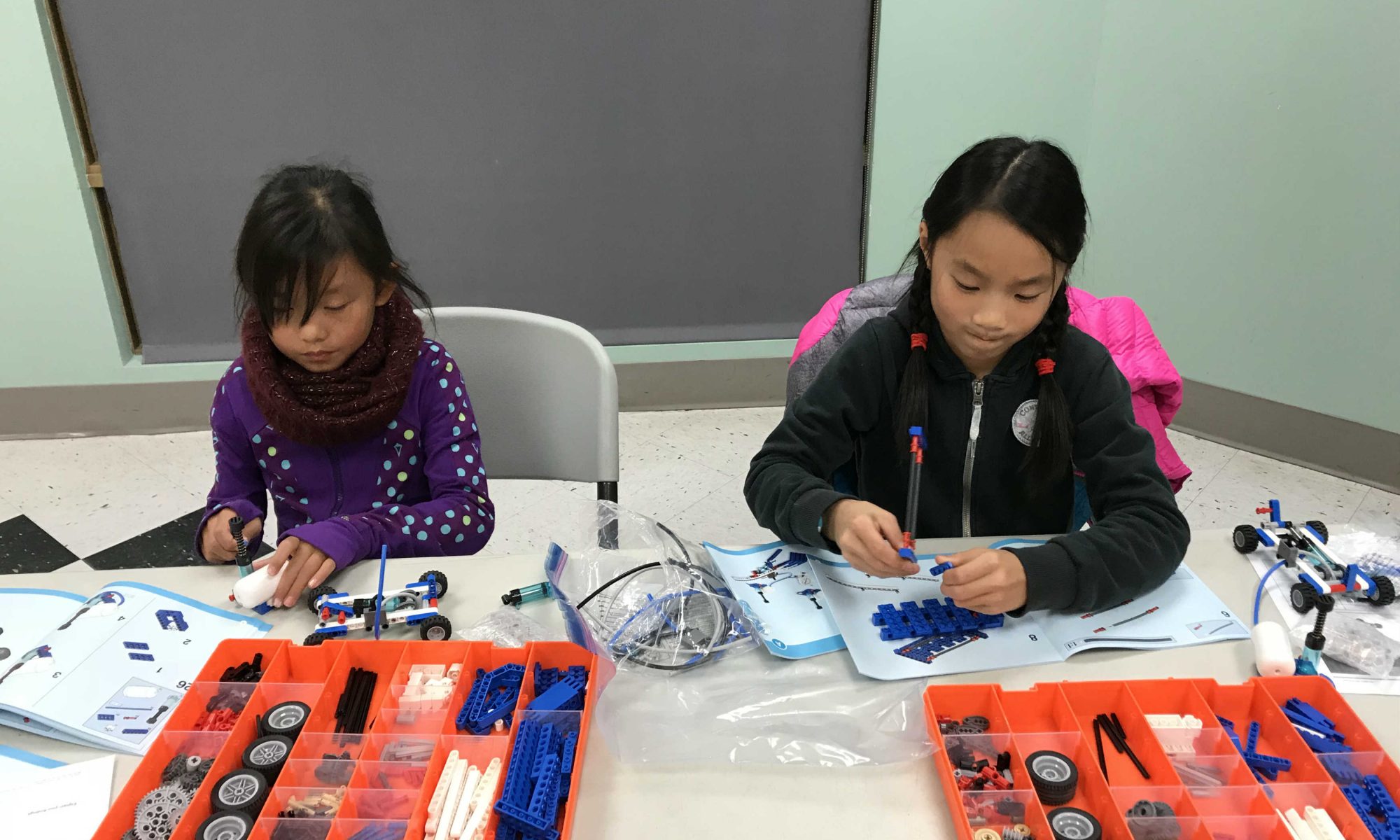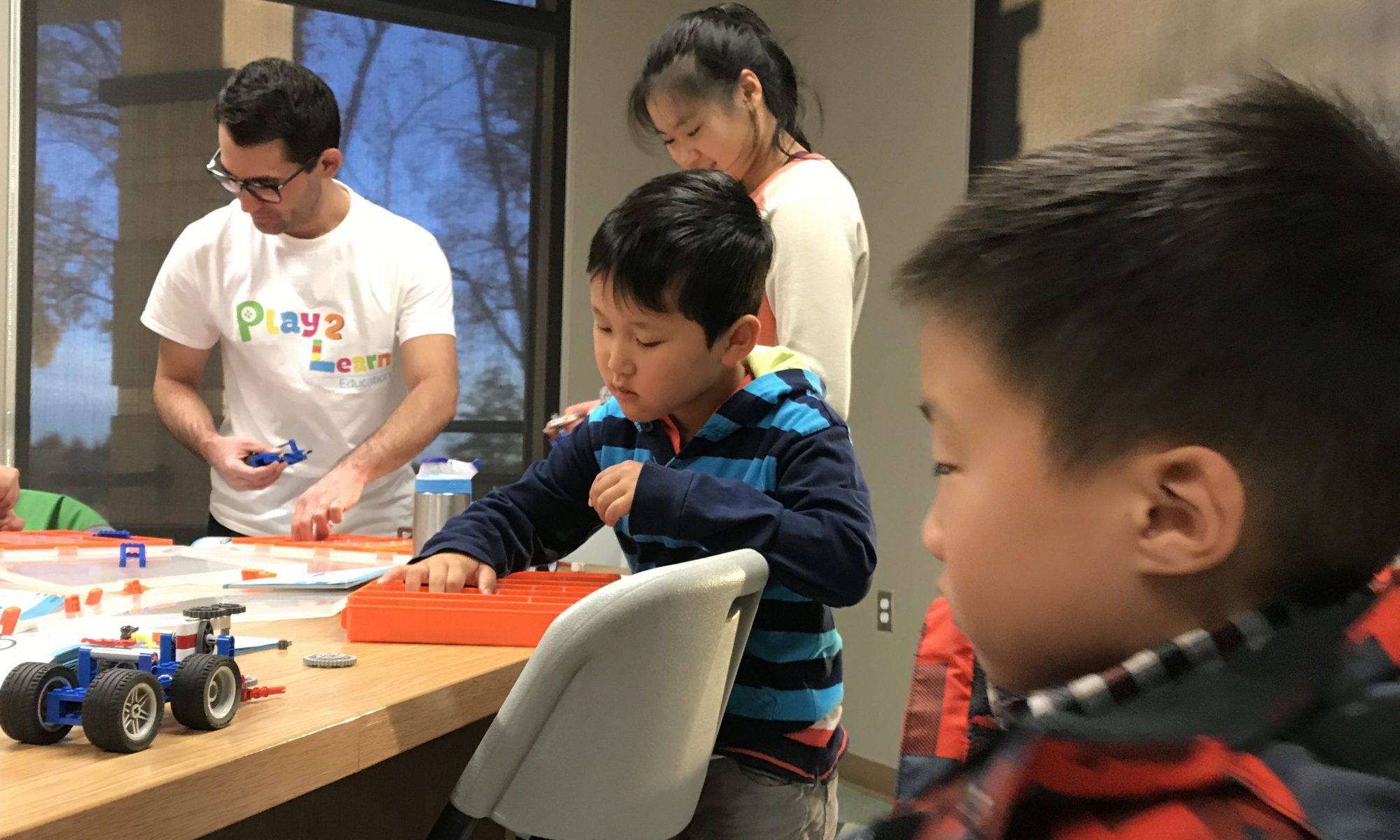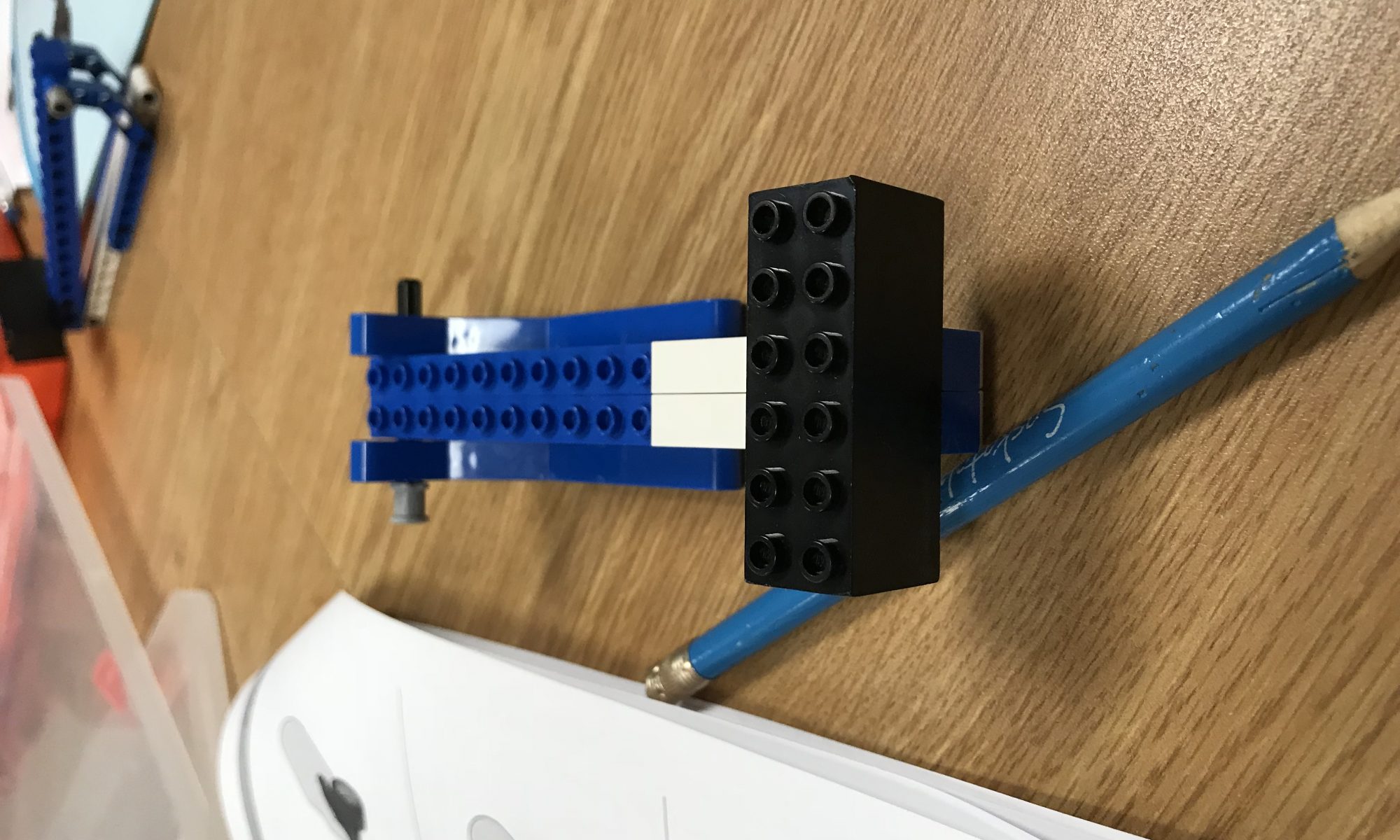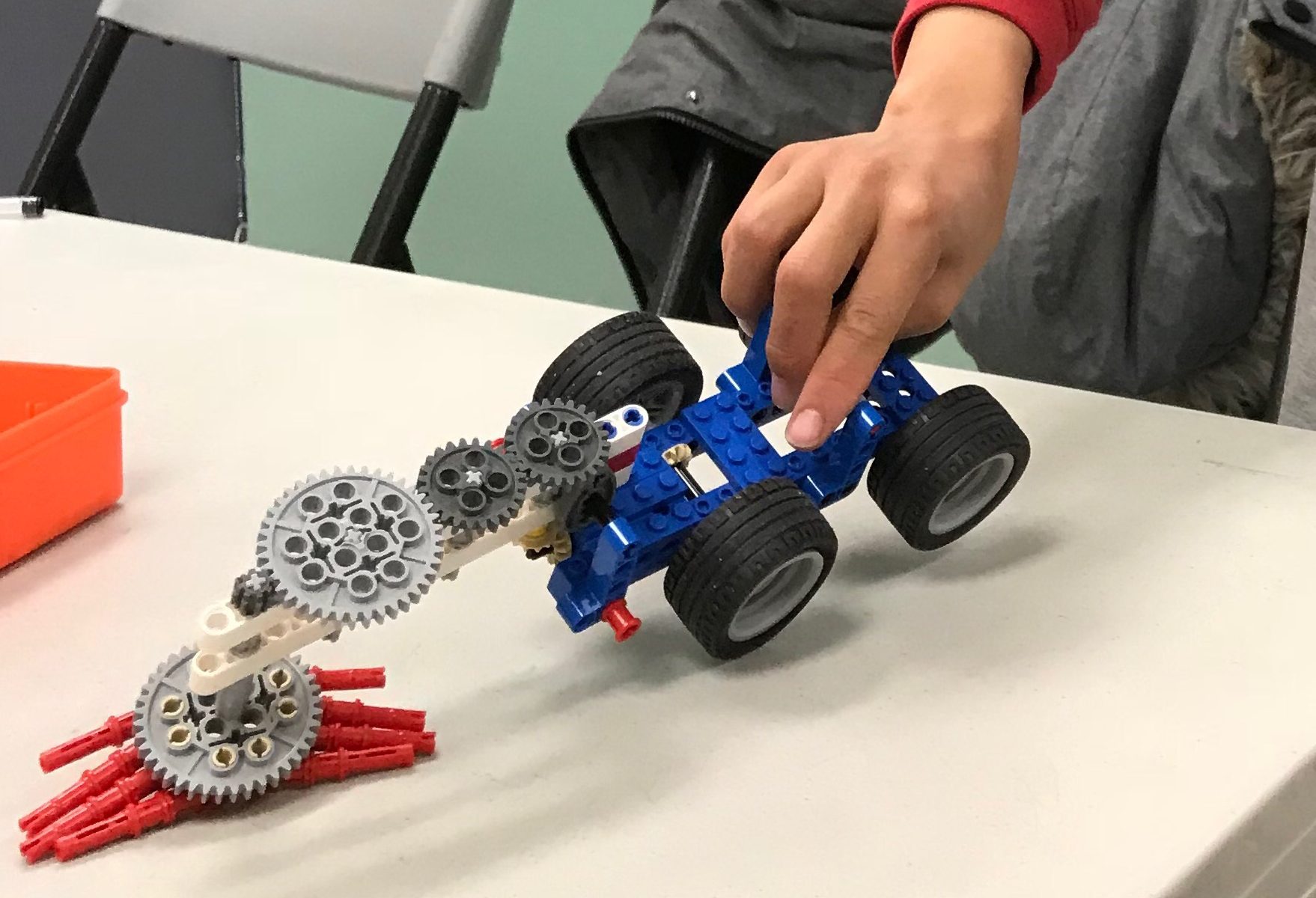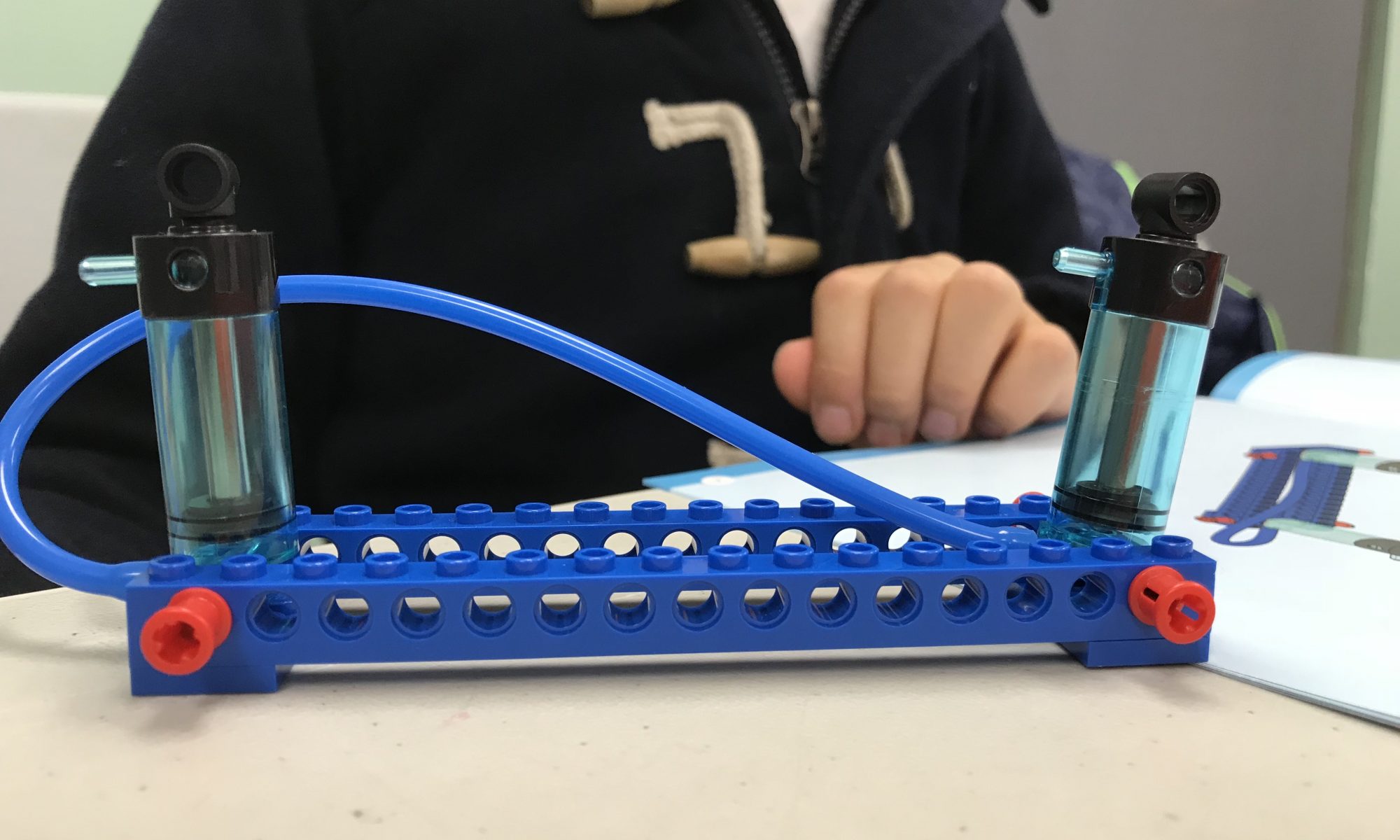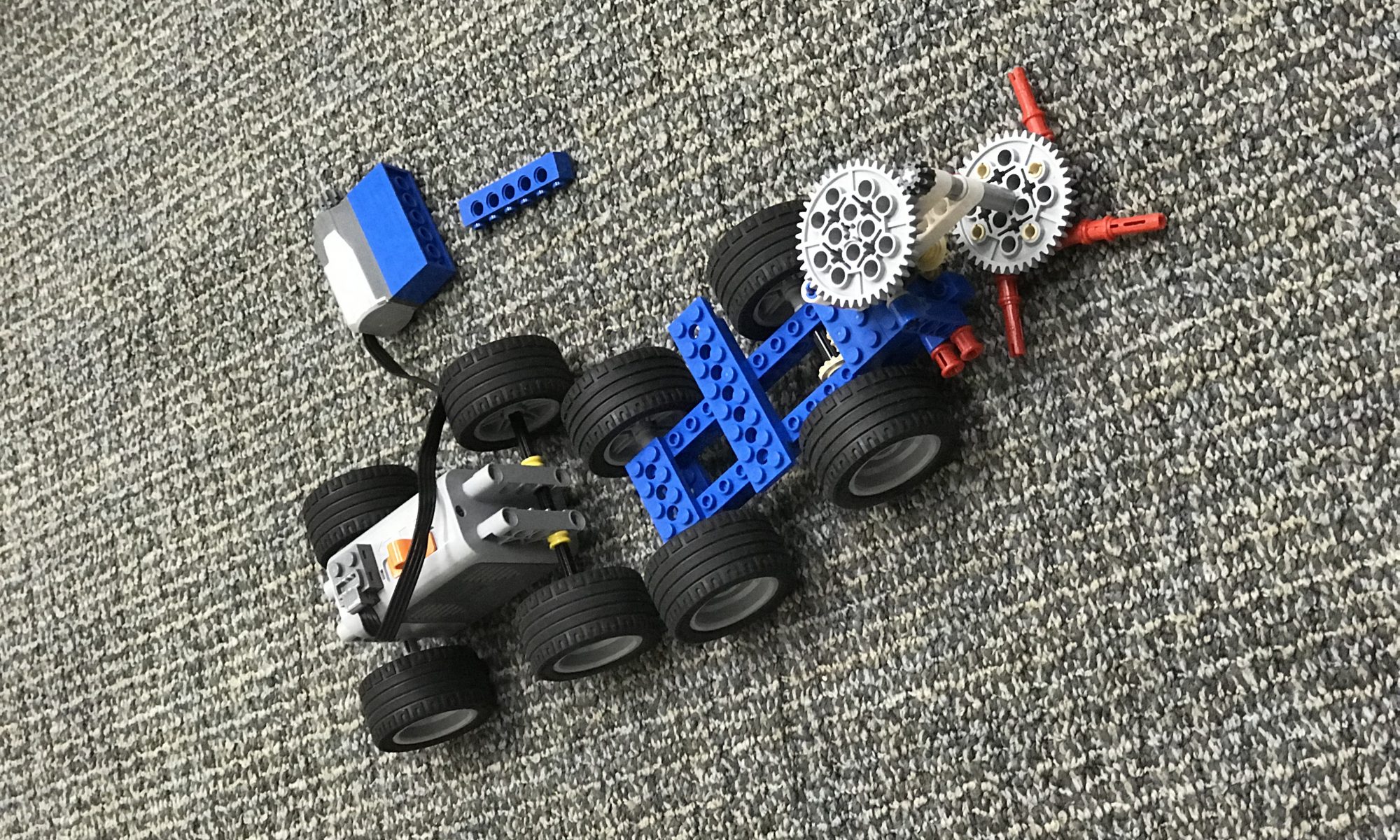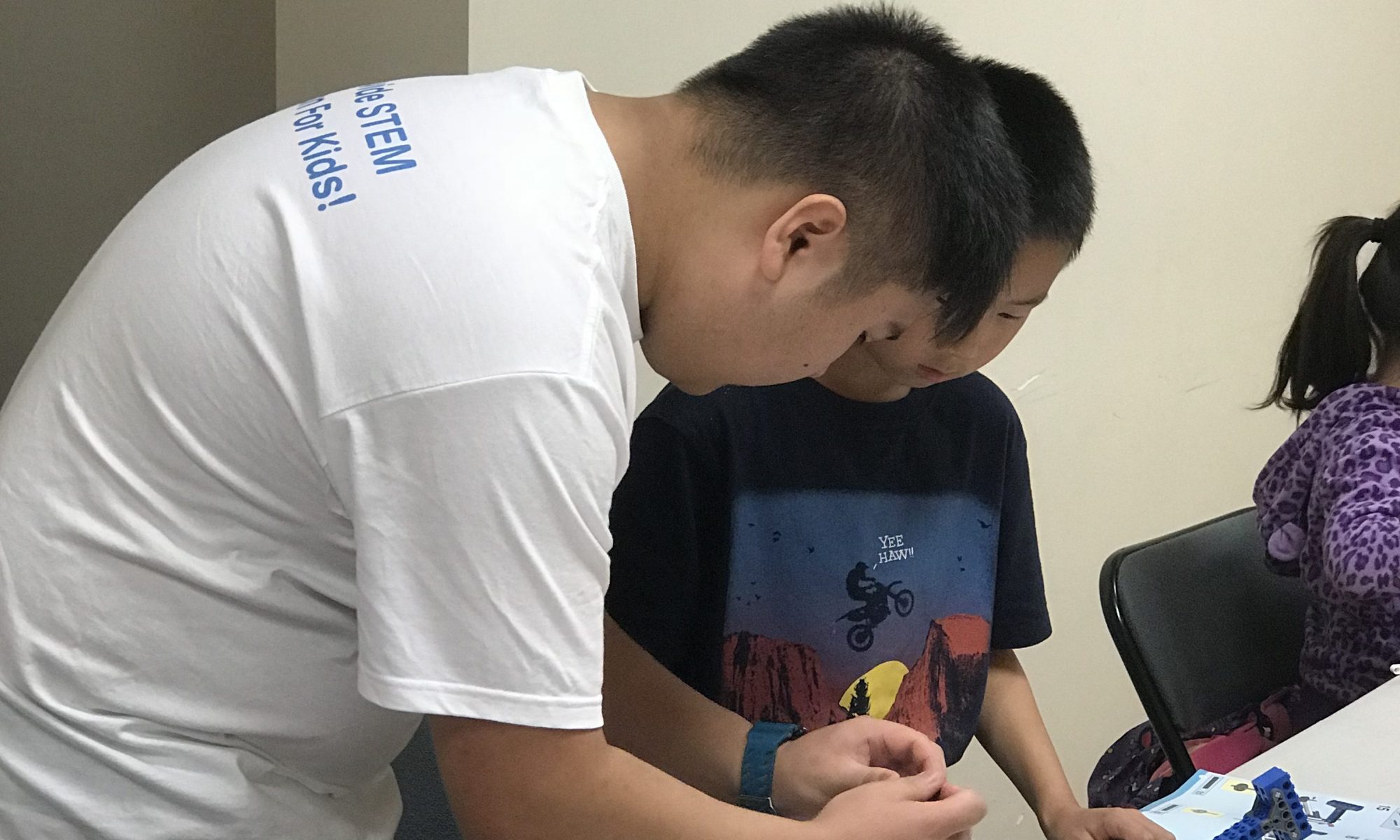Today we built cars powered by flywheels and learned about inertia and the first law of motion; that objects in motion tend to stay in motion and objects that are still tend to stay still. The kids loved being able to see their cars move and overall had fun with them. A few build issues were encountered regarding the gearbox though some of these were due to the fault of the model. During the lecture segment Eva was able to readily point out the relationship between the mass of the flywheel and the amount of energy that it carried and demonstrated good reasoning skills.
I ask that parents get the children the do their homework and to help them clean up a bit less violently.





